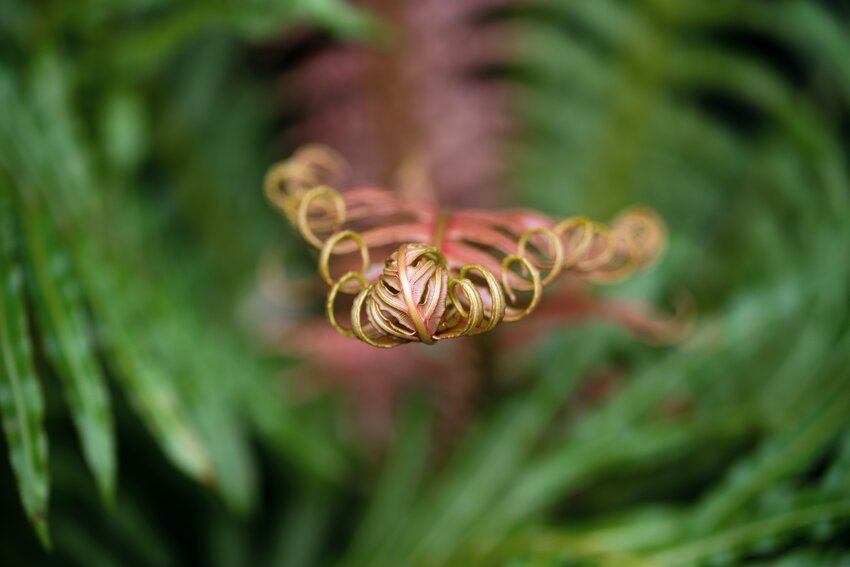The curry leaf plant has established itself as an essential component of Indian cuisine. But, nowadays, this has led to its widespread popularity among both hobbyists and commercial growers across the globe.
Like other plants, curry trees have to fight against various diseases throughout their lifespan. Such a common problem that many gardeners face is curling on the leaves (like Jude) of the curry plants. Now the question is, why is my curry leaf plant leaves curling?
There might be several reasons for this. For example, if your plant is exposed to too much light or heat, you’ll see the leaves might get a curl like spinach on the upside. There’re some other reasons which we’ll cover below in this article.
The curling of curry leaf tree leaves might result in death or falling off like olive leaves or not as blooming as before. So, you should take it seriously. Thus, it’s important to know the reasons why this happens and how to get rid of the curry leaves curling problem. Let’s walk with us through the article to get a clear idea of this topic.
Everything About Causes and Solutions of Curry Plant Leaves Curling

Why Are My Curry Leaf Plant Leaves Curling?
This question is asked another way by some gardeners, why is my curry leaf plant dying? Curling might cause death thus their causes are almost the same. There might be so many different reasons why are your curry leaves curling like the yucca plant. Let’s discuss some of the important reasons.
1. Pesticides
One of the main reasons for curling can be pesticides. Sucking insects like aphids can promote leaf distortion and curling. In general, they may be found on the leaf’s underside or towards the end.
There’s another insect called whiteflies that can cause your curry plant’s leaf to curl upward. The transparent nature of these bugs makes it difficult to identify them. They stick to the leaves undersides, sucking moisture from the air.
Nevertheless, pests may be eradicated with the use of insecticides sprayed on the affected area. To avoid applying pesticides or because they are too expensive, you may use soapy water instead.
Re-apply until all of the aphids have been killed off. For major infestations, removing the worst afflicted regions is frequently the best option.
However, you can avoid pest problems by employing sticky traps that draw them in. You should inspect your plants thoroughly if you find the sticky traps filled up with bugs as a sign of a future issue rather than a complete remedy.
2. Over Exposure to Light
Though curry leaf trees love to be in the full sun, however, overexposure to light might be the reason for curling. Excessive photosynthesis has caused a chemical reaction inside the plant, which is the likely cause.
Like animals, humans require food, but overconsumption may lead to disease. Plants, too, follow the same rule. That’s why excessive light might cause the older leaves to curl (like calathea) and fresh leaves to go brown and eventually dies.
But your curry leaf tree might benefit from less direct sunlight, or a net screen could be placed between the window and the plant to lessen the glare.
3. Overheating
Like too much light, too much heat is also one of the main reasons for your curry leaf plant curling like a paddle plant because leaf curling is a natural response to excessive heat, which may contribute to fast water loss.
Even frequent watering may be unsuccessful if your plant is losing water at a pace that prevents it from receiving the advantages it needs under these conditions. Moving the plant could be a better option than just increasing the frequency or volume of watering
As an alternative, you may open a window or use a fan to cool it off. Lastly, don’t forget to monitor the room’s temperature and avoid placing plants near heaters or light sources if you want to keep them from suffering from overheating.
Moreover, it’s also important to provide enough room between plants for air to circulate.
4. Transmission of A Virus
If your curry leaf plant’s leaves are curling like aloe upward, it may be an indication of a viral infection. Removing the infected plants will help prevent their spread since most plant diseases are incurable.
Infected plants are likely to show a variety of symptoms, including leaf curl. As soon as you remove an infected plant, it is best to properly inspect your other plants near the curry leaf tree for indications of illness and remove any that appear.
Try initially removing just the affected parts of any plant that seems healthy apart from the little area of illness. However, you should keep a watchful lookout for any further indications of infection and take action as soon as you see them.
5. Herbicide-Induced Chemical Injury
When using herbicides, they must be properly targeted exclusively at the weeds you are trying to eliminate. Your valued plants might be permanently damaged if they come into contact with herbicides, which are sometimes indiscriminate in their destruction of vegetation.
If you see that the plant’s leaves are curling (like the olive trees) inward, this is one of the first symptoms that it has been damaged, and if you detect it soon enough, you may be able to safeguard the plant by saturating it with water.
Most herbicide damage cannot be reversed, and the best approach is to remove the affected sections of a plant.
In cases when removal is impossible, give the plant a good dosage of fertilizer and water to help it fight back against the herbicide’s harmful effects.
6. Soil Problems
Soil that drains properly and is somewhat acidic will be ideal for curry plants. When it comes to pH, the curry plant prefers an ideal range of 5.55 to 6.06. If you see dark, white, or brown patches on the leaves of your plants, this may suggest a problem with the soil.
It’s also possible that the plant’s leaves may develop a golden hue. Keep in mind that troubleshooting the plant may be all you need to get to the bottom of the problem in certain cases. However, a pH test may assist detect whether the soil is excessively alkaline or acidic.
How to Solve Curry Leaves Curling?
As you already got to know the reasons behind your curry leaf tree curling now it’s time to know how to solve these issues. So, how to revive the curry leaf plant like a dying cordyline?
Soil Test
Before going to the solution, you have to identify the specific reason why your curry plants dying or curling. For example, if the leaves are turning brown or yellow it might be a fungal or watering problem.
To find out the exact problem do a pH and hydration test of the soil. For the pH test, you can use a pH testing kit.
On the other hand, you can do the hydration test by sticking your index finger approximately 2 inches into the soil. Ideally, the soil will be a mix of loose, wet, and well-draining particles.
Watering The Plants
Water the plant well and keep an eye on it for a few days if it isn’t. Make sure the plant receives sufficient sunshine if the soil is too wet. Aside from that, make sure the plant isn’t exposed to too much cold by keeping an eye on the temperature in the surrounding area.
Apply Pesticides
To get rid of a fungus, spray the tree with a high-quality fungicide. A suitable pesticide must be used if a pest infestation is responsible for the problem. Apply it numerous times over the course of several weeks if you want it fully gone from the tree.
How To Take Care of Your Curry Leaf Plant?

After knowing how to solve the curling issue now you should more focus on taking care of your plant. Here are some major elements where you should keep your eyes to take care of your curry leaf plant.
Climate
Unless you live in a region where cold temperatures aren’t a problem, it’s best to keep your plants inside (like asparagus crowns planting). USDA zones 8 to 11 are the best place to grow these crops.
However, you can grow the plant in a container just like parsnips outside in mildly cold weather, and when the temperature goes down transfer the plant inside.
Requirements for The Soil
This plant thrives in well-drained, slightly acidic soil, which is ideal for it. Soil amendments such as sand or manure may be necessary if you want this plant to thrive in different kinds of soil.
Watering
A weekly watering will be enough for this plant in the spring and cooler months of the year. However, in the summer heat, it may be necessary to water the soil daily to prevent it from drying out.
Do not overwater your plant while it is chilly outdoors, since it will most likely be dormant at this time of year. To avoid root rot and other problems, you’ll need to keep the roots of this plant out of water.
Criteria for Pruning
In order to maintain plants’ health and development, pruning is a practice that is carried out on them. One of the most common practices is to carry it out every year.
Just pinch off the plant’s dead leaves and branches in the spring, when they’re most active. As long as the plant is performing well, this may be done a few times a year to help it flourish.
Frequently Asked Questions on Curry Leaf Plant Leaves Curling
What are different curry leaf plant diseases?
Some of the most common curry leaf tree diseases are scales, aphids, leaf spots, leaf curls, psyllid, tortoise beetle, and more.
What are various homemade fertilizers for the curry leaf plant?
Some of the proven homemade fertilizers for curry leaf trees are rice water, cow dung manure, eggshells, blood meal, buttermilk, Epsom salt, etc.
How to protect curry leaves plants from insects?
You can apply neem oil spray to get rid of bacteria and insect infestations. For a good result, use neem spray once a week for 2 to 4 weeks.
Why is my curry leaf plant turning yellow in summer?
This might happen due to seasonal changes or excessive temperature. Other possible reasons are infestations of fungi, bacteria, animal pests, and insect pests.
Why is my curry leaves plant drooping?
The falling of curry leaves might happen for several reasons including soil problems, less exposure to sunlight, winter dormancy, and low temperature.
Conclusion
Hopefully, now you got the answer to why is your curry leaf plant leaves curling. Whenever you notice any curling or yellow or brown leaves first of all check thoroughly your plant and find the actual reason and then eliminate the problem.
Not to mention, take care of your plant on a regular basis and put fertilizer regularly to get a healthy plant.

I’m Shofi, a passionate gardener and blogger. I have 10+ years of experience in gardening and hold certifications in horticulture and garden design. I share my knowledge and skills through my garden blog to inspire and educate others on the joys of gardening. I try to provide valuable information and create a community for gardeners of all levels to connect and learn. My ultimate goal is to inspire others to start their own gardens and connect with nature.

